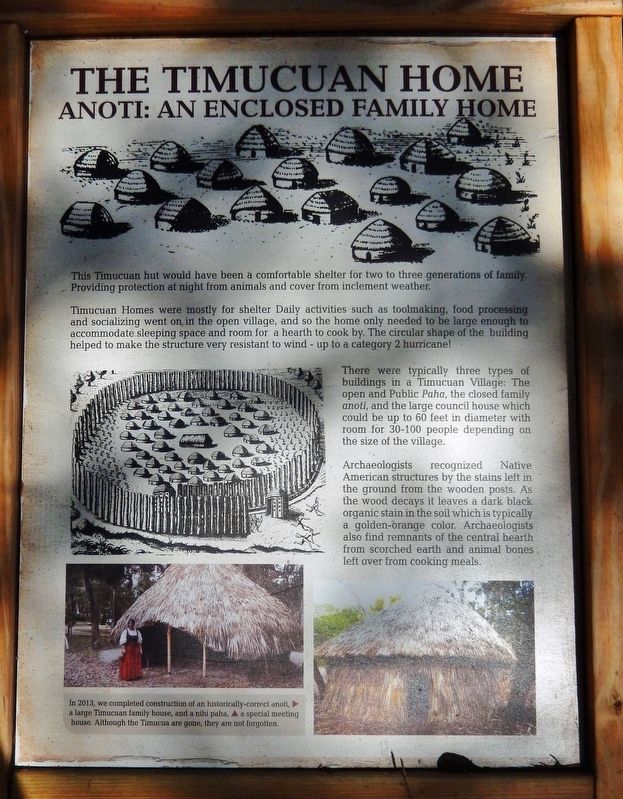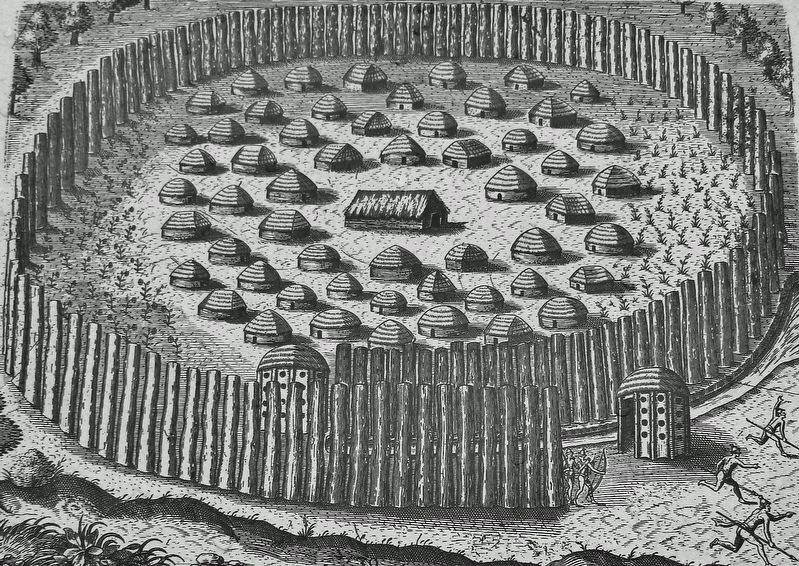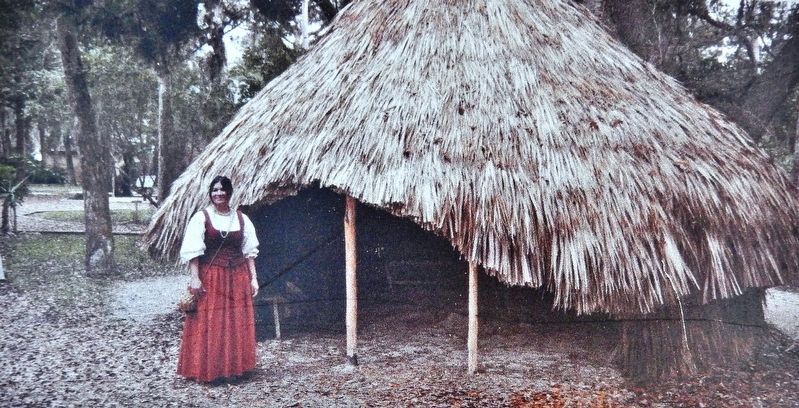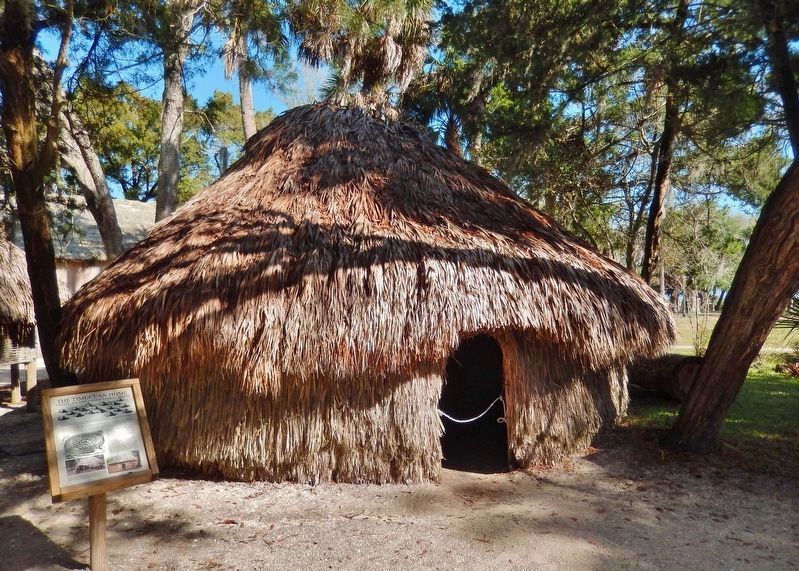St. Augustine in St. Johns County, Florida — The American South (South Atlantic)
The Timucuan Home
Anoti: An Enclosed Family Home
This Timucuan hut would have been a comfortable shelter for two to three generations of family, providing protection at night from animals and cover from inclement weather.
Timucuan Homes were mostly for shelter. Daily activities such as toolmaking, food processing and socializing went on in the open village, and so the home only needed to be large enough to accommodate sleeping space and room for a hearth to cook by. The circular shape of the building helped to make the structure very resistant to wind — up to a category 2 hurricane!
There were typically three types of buildings in a Timucuan Village: the open and Public Paha, the closed family anoti, and the large council house which could be up to 60 feet in diameter with room for 30-100 people depending on the size of the village.
Archaeologists recognized Native American structures by the stains left in the ground from the wooden posts. As the wood decays it leaves a dark black organic stain in the soil which is typically a golden-orange color. Archaeologists also find remnants of the central hearth from scorched earth and animal bones left over from cooking meals.
[photo caption]
• In 2013, we completed construction of an historically-correct anoti, a large Timucuan family house, and a nihi paha, a special meeting house. Although the Timucua are gone, they are not forgotten.
Topics. This historical marker is listed in these topic lists: Anthropology & Archaeology • Architecture • Native Americans. A significant historical year for this entry is 2013.
Location. 29° 54.401′ N, 81° 18.91′ W. Marker is in St. Augustine, Florida, in St. Johns County. Marker can be reached from Williams Street east of Magnolia Avenue. Marker is located along the interpretive trail in Ponce de León's Fountain of Youth Archaeological Park. Touch for map. Marker is at or near this postal address: 11 Magnolia Avenue, Saint Augustine FL 32084, United States of America. Touch for directions.
Other nearby markers. At least 8 other markers are within walking distance of this marker. Life in the Timucuan Village (a few steps from this marker); Timucuan Style Dugout Canoe (a few steps from this marker); Mission Life in Nombre de Dios (a few steps from this marker); The Owl Totem from Hontoon Island (within shouting distance of this marker); The Menéndez Settlement Field (within shouting distance of this marker); Chief Saturiwa (within shouting distance of this marker); The Original Mission Church (within shouting distance of this marker); Archaeology of the Menéndez Encampment (within shouting distance of this marker). Touch for a list and map of all markers in St. Augustine.
Related markers. Click here for a list of markers that are related to this marker. Ponce de León's Fountain of Youth Archaeological Park
Also see . . . Timucua Indians Homes.
There are not many special descriptions of Timucua houses. Ribault says:(Submitted on December 27, 2021, by Cosmos Mariner of Cape Canaveral, Florida.)Their houses are made of wood, fitly and closely set up, and covered with reeds, the most part after the fashion of a pavilion. But there was one house among the rest very long and wide, with seats around about made of reeds nicely put together, which serve both for beds and seats, two feet high from the ground, set upon round pillars painted red, yellow, and blue, and neatly polished.Le Challeux describes them thus:Their dwellings are of a round shape and in style almost like the pigeon houses of this country, the foundation and main structure being of great trees, covered over with palmetto leaves, and not fearing either wind or tempest.Says Le Moyne:The chief’s dwelling stands in the middle of the town, and is partly underground in consequence of the sun’s heat. Around this are the houses of the principal men, all lightly roofed with palm branches, as they are occupied only nine months in the year; the other three, as has been related, being spent in the woods. When they come back they occupy their houses again; and if they find that the enemy has burnt them down, they build others of similar materials. Thus magnificent are the palaces of the Indians.
Credits. This page was last revised on December 29, 2021. It was originally submitted on December 26, 2021, by Cosmos Mariner of Cape Canaveral, Florida. This page has been viewed 802 times since then and 151 times this year. Photos: 1, 2, 3, 4. submitted on December 27, 2021, by Cosmos Mariner of Cape Canaveral, Florida.



